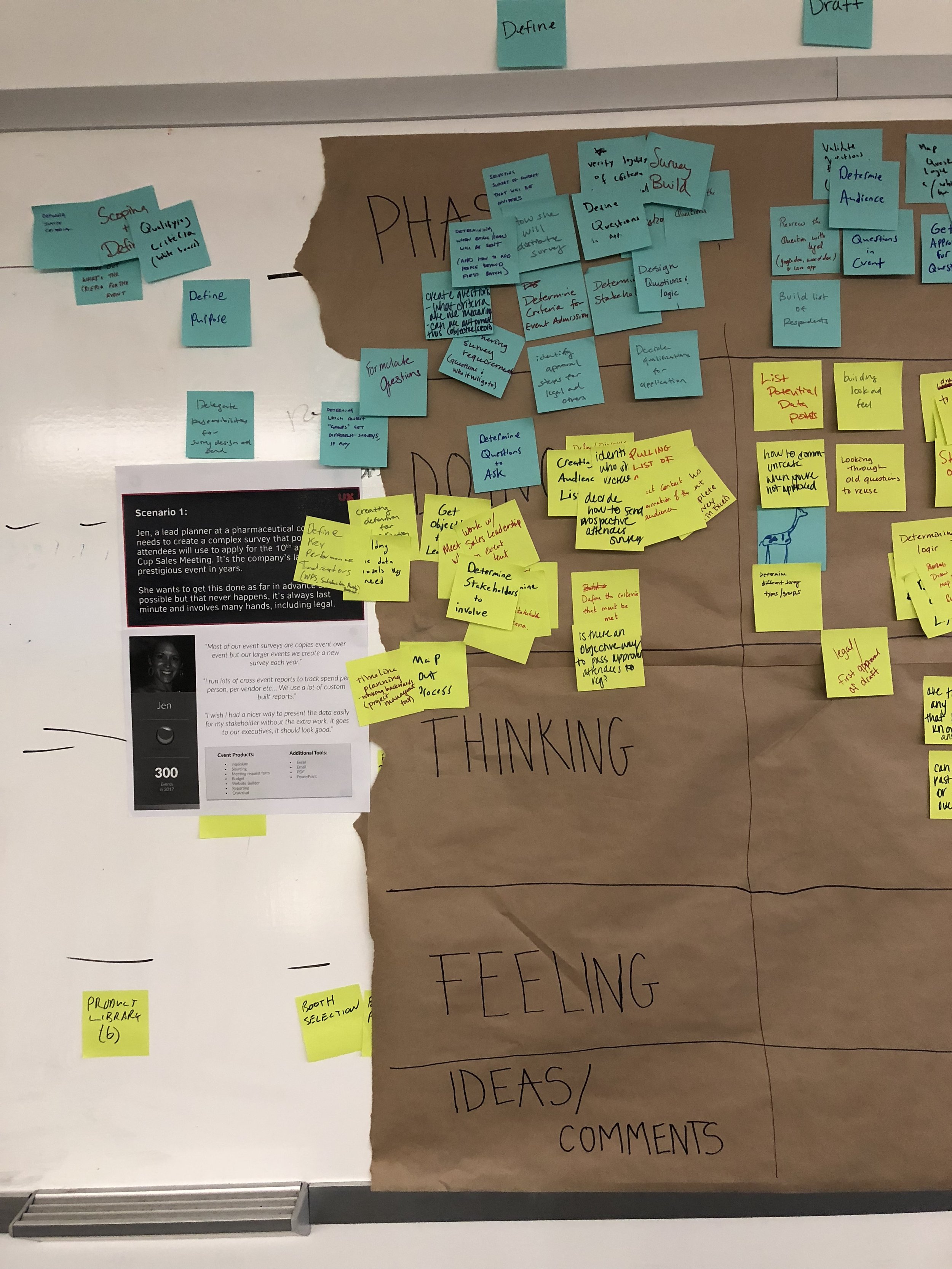Journey Mapping
At Cvent we had a cluster of disparate survey products that worked independently of each other. This caused workarounds, support calls, and frustrated users. Before making any future roadmap decisions, the product team wanted a way to understand the current experiences and how they served our users.

“Cvent surveys changed my life…for the worst. I’ve become an expert in workarounds for EVERYTHING!”
— Cvent User
Approach
Emersion and Level-Set
To get up to speed quickly I attended user training sessions, read support articles, and performed product deep dives on all of our survey products. This allowed me to quickly grasp the size of the survey solutions we offered today. As a result, I delivered a map to visualize the vast and disjointed survey products. This was used to develop a shared understanding within the product team.
In-Person Mapping Session
I traveled to the HQ to bring together a cross-functional team (VP’s, Customer success, support, design, research, and engineering) to contribute to the journey map workshop. Before we got started with the exercise, we added context by reviewing the personas and data compiled from the user interviews. The result was a rough journey map.
Visualize Findings
User and Stakeholder Interviews
To ensure we had the true perspectives we needed to build out our journey maps, we interviewed eight users and eight stakeholders. The main stakeholders we brought in for interviews were the customer success and support team members. Our focus was understanding two scenarios, one for building surveys and one for reporting on the data of a survey.
After the delivery of the journey maps, we began to explore the opportunities that presented themselves. I was moved to another project but left the team with evidence to support future decisions including the journey maps, opportunity themes, early-stage flows, and wireframes to solve priority pain points.
